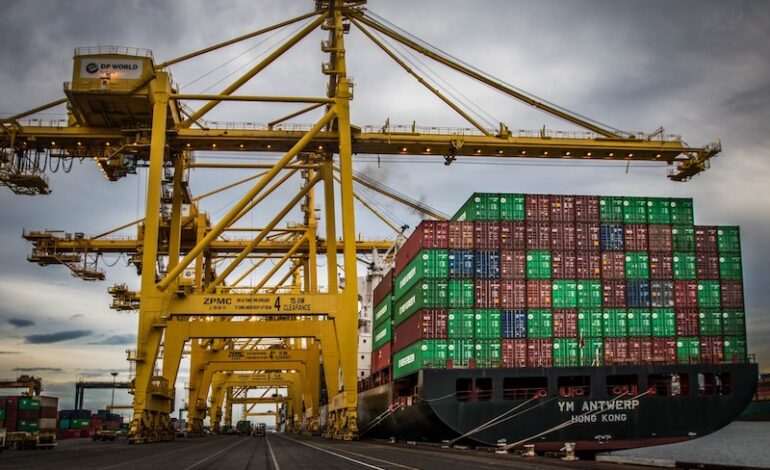Chinese Shipping to US Plummets 90% Amid Tariff Threats

Trade between the United States and China has experienced a dramatic downturn, with the number of Chinese vessels entering U.S. ports plummeting by over 90% since January 2025. According to data from maritime analytics firm Pole Star Global, the drop in shipping activity has been swift and severe, highlighting the escalating tensions between the two economic superpowers.
The data reveals that the number of Chinese ships entering U.S. ports has decreased from 1,678 in January to just 156 in October 2025. This decline coincides with the introduction of reciprocal port fees and renewed threats of tariffs from the administration of former President Donald Trump. Saleem Khan, Chief Data and Analytics Officer at Pole Star Global, noted, “We are seeing Chinese vessels that are being screened by our customers nearing zero,” emphasizing the alarming reduction in maritime activity.
The downturn follows Trump’s warning that he may impose an additional 100 percent tariff on Chinese goods, potentially raising existing tariffs to around 130 percent. In statements made earlier this month, Trump framed this escalation as part of his strategy to “protect American workers” and pressure Beijing into “fair trade.” Economists are concerned that such actions could disrupt global supply chains significantly.
According to CNN, the proposed tariffs would apply to approximately $360 billion worth of Chinese imports, potentially adding hundreds of billions in costs for U.S. companies that depend on these goods. Concurrently, both nations have begun enforcing new port fees on each other’s vessels. Chinese ships entering U.S. ports now face fees based on gross tonnage, while Beijing has implemented its own tariffs of 400 yuan per ton, projected to increase to 1,120 yuan by 2028.
Analysts predict that if trade volumes return to previous levels, these cumulative costs could reach $20-23 billion annually. Yet, current Pole Star data suggests that such volumes are unlikely to recover soon. The immediate consequence of these changes has been significant logistical disruption, with shipping companies diverting their vessels to alternative routes.
Khan highlighted that shipping patterns are already shifting as a result of the new port fees. He stated, “In the short term, we should expect route changes, void sailings, and noticeable upward pressure on freight rates as carriers implement surcharges or General Rate Increases (GRIs) to pass costs onto shippers.” The implications of these changes extend beyond shipping lanes; China is a key supplier of consumer electronics, automotive components, and industrial machinery to the United States.
Should maritime trade remain frozen for an extended period, the risk of shortages, inflation, and production delays across multiple sectors could rise. Economists have noted that even without the implementation of new tariffs, the mere anticipation of them is already dampening trade flows, as importers seek to hedge against potential impacts by shifting their supply chains.
The Al Jazeera report indicates that the renewed tariff threats also reflect a political strategy aimed at bolstering domestic manufacturing ahead of the upcoming elections. In response, China’s Commerce Ministry characterized U.S. actions as “wilful and harmful,” warning it would take “necessary countermeasures” if the 100 percent tariff proposal moves forward.
The combination of tariffs, port fees, and retaliatory measures has nearly halted trade activity between the two nations. The data from Pole Star provides a timely indication of this slowdown, serving as a precursor to the trends that will eventually manifest in official trade statistics.
As Khan observes, the current situation indicates a potential long-term shift in global commerce. “Trade routes can change faster than policy. Once ships stop coming, restarting them is not easy.” If the tariffs are enacted and port fees persist, the world’s busiest trade corridor may witness its lowest activity levels in decades. This could signify not only an ongoing trade dispute but also the beginning of a structural decoupling between the United States and China, reshaping global logistics for years to come.






